- The launch of the B5+1 Initiative represents an important milestone in the United States’ quest for greater influence in Central Asia;
- B5+1 marks a shift in power dynamics in the region, with increased competition between Russian, Chinese and American interests;
- The true impact of the B5+1 Initiative will be measured by improving the quality of life of Central Asians and strengthening their local economies.
The growing influence of the United States in Central Asia is generating a geopolitical upheaval, challenging decades of Russian dominance in the region.
So, it is important to follow this new tactic from the United States, as it is influencing not only the economy of Central Asian countries, as well as changing partnerships and rivalries between Europe and China.
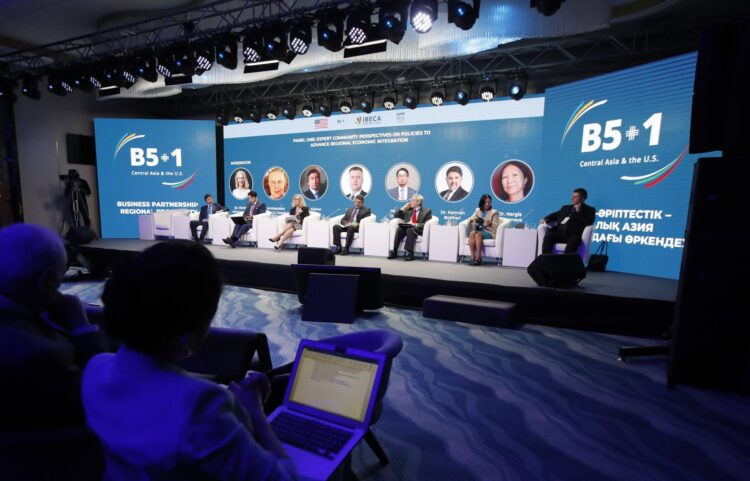
What is the B5+1 Initiative launched in Central Asia?
The B5+1 Initiative, also known as the “B5+1 Forum,” is an economic-focused gathering where representatives from various Central Asian countries come together to discuss how they can collaborate to boost the development of their communities. But what does this really mean?
The “B” stands for “business,” and the “5+1” represents the participation of five Central Asian countries, plus one country: the United States. Essentially, it is a meeting between businesses and governments of these countries to explore ways to work together and strengthen the integration of their economies.
The first B5+1 Forum was held in the economic capital of Kazakhstan, in Almaty, and was attended by policymakers from Central Asia, the Americas, and other regions, as well as prominent business leaders operating in the area.
During the Forum, participants discussed a variety of topics, including transportation, online commerce, tourism, clean energy (such as solar and wind), and agriculture. These sectors are crucial for the sustainable economic growth of the region.
Therefore, the B5+1 Forum represents an alternative opportunity for Central Asian countries to come together and collaborate to promote economic development and create a prosperous future for their citizens.
How does the B5+1 Initiative challenge Russian economic hegemony in Central Asia?
Central Asia, located in the heart of the Asian continent, is a strategic region comprised of countries historically linked to Russia.
Before the dissolution of the Soviet Union in 1991, all Central Asian countries were part of this bloc, but since then, they have gained independence, although they still heavily reflect Soviet influence in their history and culture.
The United States’ interest in the region is multifaceted. In addition to its abundant natural resources such as oil, natural gas, and minerals, these countries occupy an important geographical position between Europe and China, two global commercial powers. As a result, competition for influence in the region has intensified.
The distancing of some Central Asian countries from Moscow, especially due to the war in Ukraine, has created opportunities for other international actors with interests in the region.
Therefore, US participation in the B5+1 Initiative adds a new layer of challenge to Russia’s traditional economic hegemony in the region, marking an unprecedented shift in the geopolitical dynamics of Central Asia.
For some Central Asian countries like Kazakhstan and Uzbekistan, which fear being the next targets of a new imperialist Russia following the invasion of Ukraine, fostering economic partnerships with the US is a way to ensure a future with less dependence and potentially military threat from Russia.
Not surprisingly, these same Central Asian countries have been increasing their economic and political partnerships with China and Europe for the same reason mentioned above.
From the US perspective, by closely collaborating with Central Asian countries, the United States seeks to strengthen its presence in the region, proposing partnerships in sectors such as transportation, online commerce, tourism, clean energy, and agriculture. Additionally, they also compete with China, the US’s major strategic rival, for influence in the region. In other words, with the B5+1, the US is trying to “kill two birds with one stone.”
The aforementioned sectors, along with the oil and gas sector, traditionally responsible for wealth in the region, are crucial for local economic and social development, making cooperation beneficial for both parties.
However, the growing presence of the United States as an alternative economic partner may lead Russia to intensify its efforts to maintain its influence in the region, as several of its countries are part of Moscow-led defense alliance CSTO (Collective Security Treaty Organization) and the economic bloc also led by Russia, the Eurasian Economic Union.
To have an idea, this would be equivalent to China increasing its economic and political cooperation with NATO countries and the European Union, which actually happens frequently. In other words, even though this American move may seem like a challenge to Russian interests, this type of international cooperation with countries from different spheres of influence occurs routinely.
Nevertheless, Washington’s rise in the region may indicate a lasting change in geopolitics, potentially reshaping power and influence dynamics in Central Asia.
What are the 5 key industries targeted by the United States in the B5+1 Initiative and the role of the private sector?
In the B5+1 Initiative, the United States targets five key industries considered essential for the economic development of Central Asian countries.
These industries are:
- Transportation and Logistics: This industry focuses on improving transportation infrastructure in the region, such as roads, railways, ports, and airports. Investments in this sector aim to facilitate regional and international trade, reduce transportation costs, and improve connectivity between Central Asian countries and the rest of the world, similar to the Belt and Road project.
- E-commerce: With technology integrated into everyday life, buying and selling online has become commonplace. An example of this is e-commerce in Central Asia, which aims to sell products online not only locally but also to other parts of the world. This involves creating buying and selling websites, new ways of online payment, and all the necessary digital infrastructure to grow online commerce.
- Tourism: Tourism is of great importance in Central Asia, generating money and jobs. The United States aims to help the region grow in this area by showcasing its natural beauty, culture, and unique travel options. This may involve investing in roads, promoting interesting places, and improving services for tourists.
- Green and Renewable Energy: To help the environment, the United States is investing in renewable energy in Central Asia. This involves creating more solar, wind, hydroelectric, and other clean forms of energy, reducing the use of fossil fuels, and promoting more sustainable growth.
- Agribusiness: Agriculture is crucial to the economy of Central Asia, and the United States wants to help improve it. They are considering investing in agricultural technology, better irrigation systems, and teaching sustainable practices to farmers to produce more food with the aim of achieving food security.
Before the forum in Almaty, the main organizer, CIPE, engaged hundreds of regional experts, entrepreneurs, and business representatives in the planning.
During the first day of the forum, many private sector suggestions were presented, highlighting the need for cooperation among local governments to create simple rules for trade between countries and facilitate customs procedures.
Muktar Djumaliev, former ambassador of Kyrgyzstan to the United States and leader of the transport working group, emphasized the importance of having a regional standard to solve commercial problems and to make customs procedures online. He also pointed out that Turkmenistan (also known as the North Korea of Central Asia) should stop requiring visas for people from other Central Asian countries.
However, it is still unclear to what extent regional governments are willing to adopt private sector reform proposals. Government representatives at the forum tended to emphasize general principles about connectivity but offered few details on initiating public-private dialogue.
Surprisingly, the Minister of Economy of Turkmenistan, Serdar Jorayev, addressed government efforts to facilitate public-private partnerships, contrasting with the country’s authoritarian reputation.
Why is the new B5+1 Forum geopolitically important?
The new B5+1 Forum is geopolitically important because it affects the political-economic relations of the region, thus shifting the international power balance and creating new alliances and rivalries.
By diversifying its partnerships in Central Asia, the United States is seeking to reduce its dependence on other powers. With Russia involved in Ukraine and China’s economy cooling down, Washington is seeking alternatives to strengthen its regional influence.
Regarding the potential consequences of Central Asia’s relations with Russia and China, there are several aspects to consider. Firstly,
Russia historically considers Central Asia as part of its sphere of influence and has deep cultural, economic, and political ties with the region’s countries.
Therefore, any move by the United States to strengthen its relations with Central Asia – as well as French efforts – could be perceived as a potential threat to Russia, which could lead to an adverse response from Moscow.
Furthermore, China has also invested considerably in Central Asia through the Belt and Road Initiative, aiming to expand its economic and political influence in the region. Thus, the growing presence of the United States in the region can also be seen as direct competition for China’s regional influence, potentially creating political and ideological disagreements.
In summary, Central Asia is at the center of a geopolitical transformation. The challenge to Russian influence, competition with the rise of China, and the United States’ quest for greater presence in the region are shaping a new political and economic landscape.
However, beyond power strategies, it is essential to remember that the true impact of this initiative will be felt in the lives of Central Asian citizens, where increased political openness and economic development can bring unprecedented opportunities.
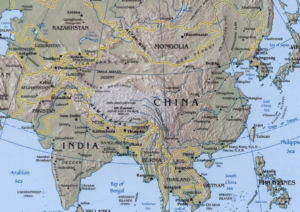





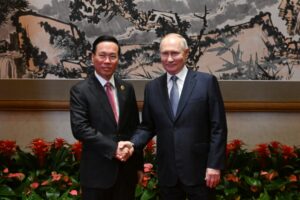
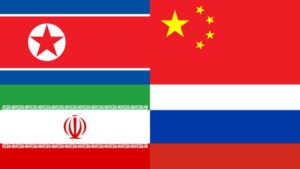


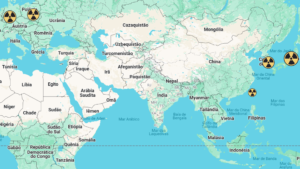
[…] nuclear arsenal in the 1990s in exchange for security guarantees from major powers, including the United States and […]